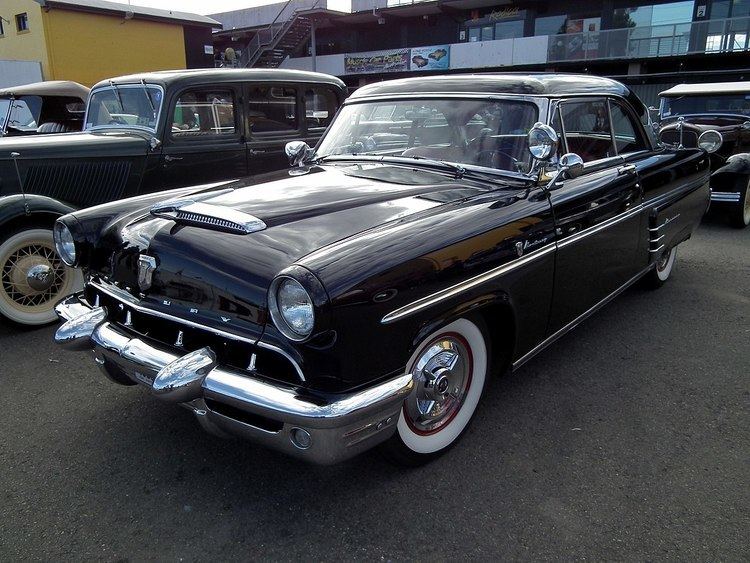 | ||
Dagmar bumpers is a slang term for chrome conical shaped styling elements which began to appear on the front bumper/grille assemblies of certain American automobiles following World War II. They reached their peak in the mid-1950s.
Contents
The term is derived from the notable physical attributes of Dagmar, a buxom early 1950s television personality known for low-cut gowns and pronouncedly conical bra cups. She was amused by the tribute.
Evolution
As originally conceived by Harley Earl, GM Vice President of Design, conical the bumper guards would mimic artillery shells. Placed inboard of the headlights on front bumpers of Cadillacs, they were intended to both convey the image of a speeding projectile and protect vehicles' front ends in collisions.
As the 1950s wore and American automakers' use of chrome grew more flamboyant, they grew more pronounced. The black rubber tips they gained on the 1957 the Cadillac Eldorado Brougham and other models were known as pasties.
By the late '50s American car designers began to shed both rear tailfins and bumper guards.
Use
Postwar Cadillacs began sporting conical bumper guards in the 1946 model year. In 1951 models, some were raised into the grille. In 1957 black rubber tips appeared. The element continued to become more pronounced in size through 1958, but were eliminated in the 1959 Cadillac redesign.
Mercury sported Dagmars in 1953 through the 1956 model year. Lincoln added Dagmars in 1960, with a black rubber ring separating the body from the chrome tip.
Buick added Dagmars on its 1954 and 1955 models, in '54 as part of the bumper assembly, moved into the grille in '55.
Revival
In 1974, motoring press applied the name of statuesque British actress Sabrina to oversized pairs of protruding rubber bumper blocks added to MG MGB, MG Midget, Triumph Spitfire and Triumph TR6 sports cars to meet strengthened US auto safety regulations. The term lingered at least to the mid-'90s in some areas.
